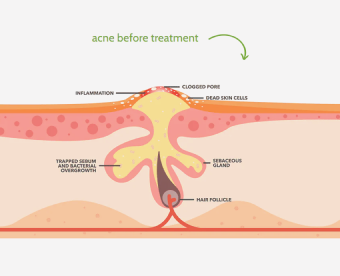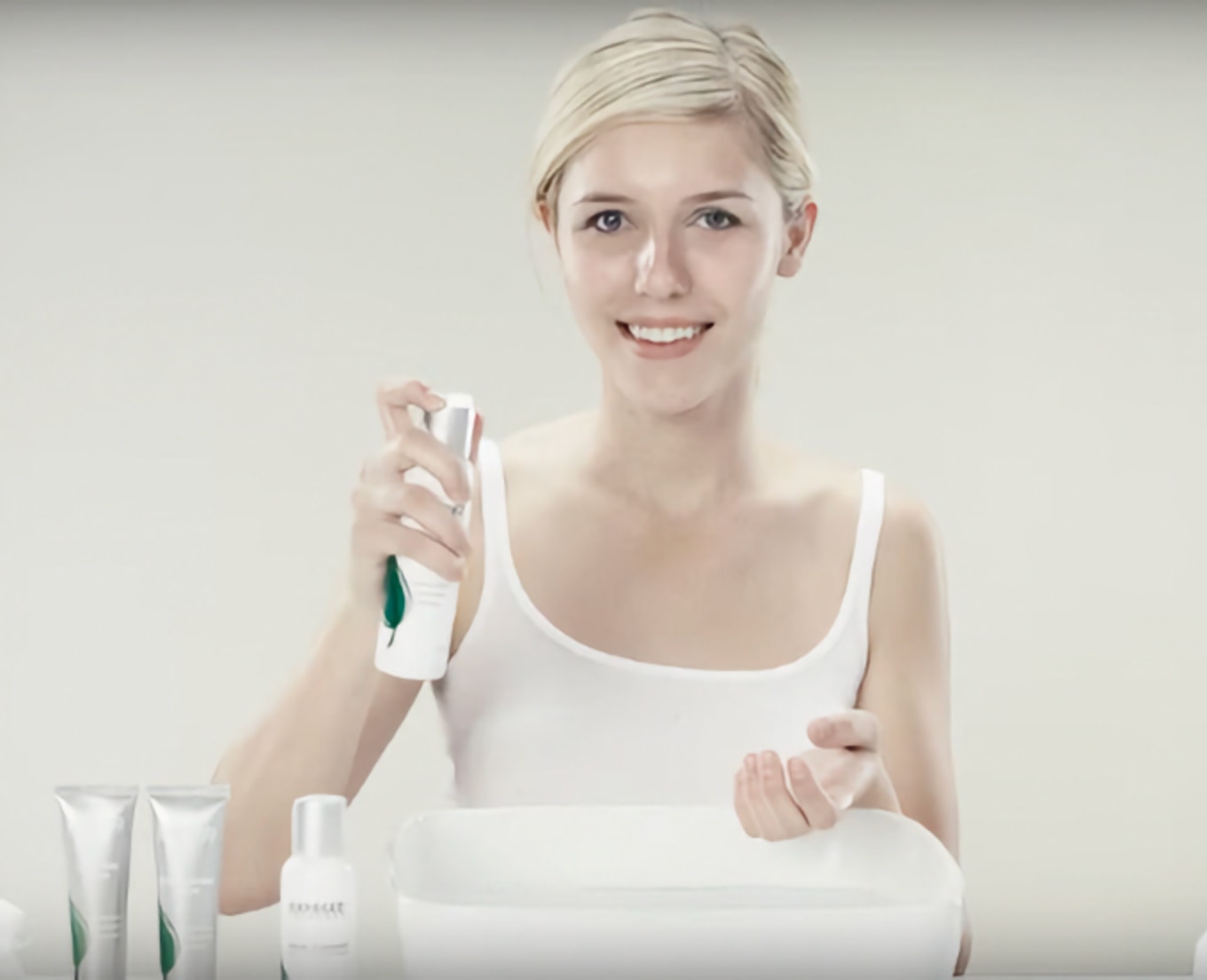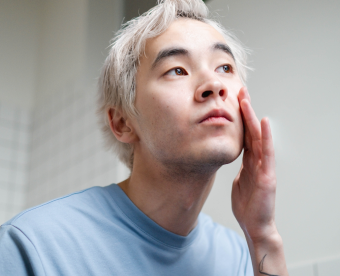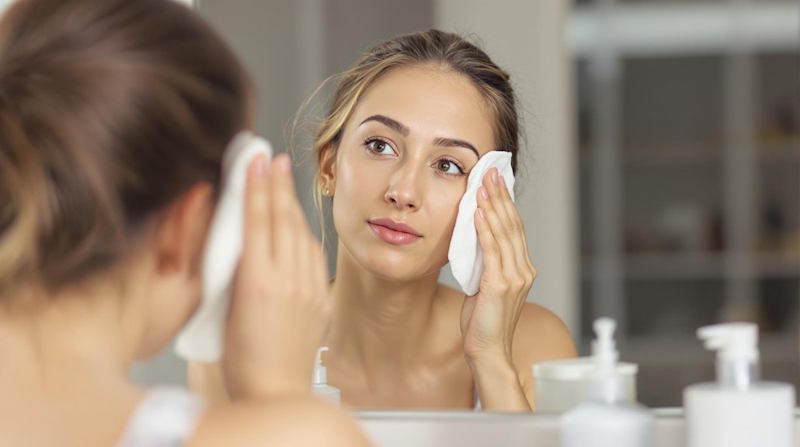Acne, an issue that affects many, often requires precise and effective management. One prominent solution in the acne treatment arsenal is doxycycline. This oral antibiotic, part of the tetracycline family, has long been used to treat acne, especially moderate to severe inflammatory acne.
This post will explore the 4 doxycycline acne purging stages, detailing everything you need to know about how doxycycline works, what acne purging is, and how to handle each stage.
Also read: How to choose the best acne treatment
Biggest Take-Aways:
- Doxycycline is a widely-used oral antibiotic for managing acne vulgaris, but it has potential side effects and interactions that individuals need to be aware of.
- Hormonal imbalances, particularly in teenagers and adults, can lead to severe acne, and doxycycline can effectively treat these conditions, though with consideration.
- Alternative methods, like Exposed Skin Care, are available for those concerned about the side effects or interactions likely to be caused by antibiotics like doxycycline.
- Exposed Skin Care provides a comprehensive solution for various acne types, offering an effective treatment without antibiotics, and aligns with specific skincare needs without potential side effects.

Stage 1: The Initiation Phase
The initiation phase is where the doxycycline acne purging stage begins. This stage is marked by the introduction of the antibiotic into the system and the initial reaction of the skin.
Understanding Doxycycline
Doxycycline is an antibiotic used to treat bacterial infections, and it's also utilized to manage acne vulgaris. Here's what you need to know:
- Acne Medication: As an oral antibiotic, doxycycline treats acne by attacking bacteria on the skin, reducing inflammation.
- Dosage of Doxycycline: Usually prescribed in doses like doxycycline 100 mg or 40 mg, depending on the type of acne.
- Doxycycline Hyclate: A common form of doxycycline used to treat acne.
Skin Purging
Skin purging refers to the skin's response to an active substance that accelerates skin cell turnover. When you take doxycycline for acne, it can cause skin purging, which means:
- Increase in Breakouts: Your acne may worsen initially as dead skin cells are shed.
- Reduction in Inflammatory Acne: Over time, inflammatory acne is likely to reduce.

Stage 2: The Purging Process
The purging stage is perhaps the most challenging part of the doxycycline acne purging process. This phase can be characterized by various changes in the skin, leading to improvements.
How Doxycycline Works in Purging
Doxycycline helps in treating acne by targeting specific bacteria associated with acne. Here are the key aspects:
- Topical and Oral Treatment: Doxycycline may be combined with topical acne treatments like benzoyl peroxide.
- Reduction in Pores: The use of doxycycline reduces pore visibility and inflammation.
- Treatment for Different Types of Acne: It can be used to treat acne lesions, cystic acne, and moderate acne.
Stage 3: Stabilization
The stabilization phase is where the effect of doxycycline really begins to show, and improvements in acne become more noticeable.
Improvement in Acne
During this stage, you will notice:
- Decrease in Breakouts: Acne isn't as prominent.
- Improved Skin Texture: Dead skin cells are replaced, and future acne is prevented.
- Less Need for Topical Treatments: Doxycycline alone becomes effective.

Stage 4: Maintenance
The final doxycycline acne purging stage is the maintenance phase, where the skin has adapted to the antibiotic, and acne is under control.
Continuing Treatment
In this phase:
- Maintaining Results: Treatment of acne continues with a full glass of water along with doxycycline.
- Avoiding Side Effects: Awareness of common side effects of doxycycline helps in management.
How Doxycycline Works for Hormonal Acne
Doxycycline is an oral antibiotic that has been shown to be effective in treating severe acne. Its properties and ways it works for acne include:
- Targeting Bacteria: Doxycycline can cause a reduction in acne-causing bacteria on the skin.
- Anti-inflammatory Effect: It helps in reducing inflammation often associated with hormonal acne.
- Combination Therapy: Doxycycline also works well with other acne medicines like benzoyl peroxide for a comprehensive treatment for acne.
However, it's important to note that doxycycline might interact with other medications, making doxycycline less effective. Therefore, individuals prescribed doxycycline must follow guidelines closely to achieve optimal results.

Considerations When Using Doxycycline for Acne
When you use doxycycline for acne, there are several considerations to keep in mind:
- Understanding Side Effects: Common doxycycline side effects include phototoxicity of doxycycline. Side effects you might experience should be discussed with healthcare providers.
- Minocycline Comparison: Both doxycycline and minocycline are used to treat acne. Doxycycline is a tetracycline antibiotic and is often preferred due to fewer side effects.
- Effect on Acne Scars: Doxycycline also improves acne scars and overall skin texture.
- Discontinuation: If purging occurs or serious side effects are experienced, don’t abruptly stop taking doxycycline without professional guidance. Sudden cessation can cause the skin to react negatively.
Doxycycline is used not only for treating bacterial infections but also as an effective solution for hormonal acne. The likely beneficial outcomes make it a go-to option, but users should know how doxycycline works for acne and be mindful of potential side effects.
Managing Acne with Exposed Skin Care: An Alternative to Antibiotics
While antibiotics like doxycycline are commonly prescribed for managing acne vulgaris, they may not suit everyone. Some individuals may be concerned about its side effects. Exposed Skin Care's unique blend of scientific ingredients and natural extracts offers a robust approach to treating acne.
Here's what you need to know about the benefits:
- Effective Treatment without Antibiotics: If you're not keen on taking an antibiotic for acne like doxycycline, Exposed Skin Care provides a viable alternative.
- Complete Care for Various Acne Types: Whether hormonal imbalances cause acne or other factors, Exposed's range of products addresses various acne issues.
- Avoid Potential Interactions: Unlike some medications that might interact with doxycycline, Exposed Skin Care is designed to work smoothly with your skincare routine.
- Less Need for Prescription Medications: With Exposed Skin Care, there is less need to take doxycycline or other prescription antibiotics, reducing concerns about potential side effects.
Choosing Exposed Skin Care for acne management offers a comprehensive and non-invasive approach that can be tailored to your specific needs. Its effective formulas provide a promising alternative to traditional antibiotic treatments and align with your skincare goals.
Conclusion
In the journey to understand the complexities of acne management, understanding the various ways to treat acne is vital. For many, this journey involves learning what they need to know about doxycycline, a common antibiotic used to treat severe acne.
Doxycycline's role, its interaction with hormonal acne, its effectiveness, and the potential side effects it's likely to cause have been explored thoroughly. The management of acne vulgaris isn't limited to antibiotics alone.
Alternative methods are available, including innovative products such as Exposed Skin Care, offering a complete care system that targets various acne types without prescription medications. It represents a harmonious blend of science and nature to tackle acne without causing additional complications.
As the understanding of acne continues to evolve, so does the range of treatments. Individuals concerned about the side effects likely to cause discomfort with antibiotics can find comfort in alternative products that align with their specific needs and skincare goals.
Recognizing the unique needs of one's skin, understanding the treatment's intricacies, and choosing a path that resonates with personal preferences ensures a more satisfying journey towards healthier skin.
FAQs
Q: Can Doxycycline Cause Side Effects?
Yes, common side effects of doxycycline can include phototoxicity. Make sure to follow the prescribed dosage of doxycycline to minimize these risks.
Q: How Long Should You Take Doxycycline for Acne?
Doxycycline is usually taken for a prescribed period. Stopping abruptly or taking doxycycline for longer without supervision may cause problems.
Q: Can Doxycycline Treat Other Bacterial Infections?
Yes, doxycycline is an antibiotic used to treat bacterial infections and is also used to treat various types of acne.
Q: What Should You Know about Generic Doxycycline?
Generic doxycycline works similarly to brand-name versions, and it's prescribed to treat acne as well.



















